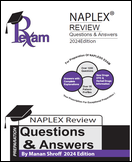
Which of the following information is/are TRUE about coronavirus? [Select All That Apply]
a. 2019-nCoV belongs to a family of single-stranded RNA viruses known as coronaviridae, a common type of virus which affects mammals, birds and reptiles.
b. In humans, it commonly causes mild infections, similar to the common cold, and accounts for 10-30% of upper respiratory tract infections in adults
c. Although the incubation period of the 2019-nCoV strain is currently unknown, the United States Centre for Disease Control indicates that symptoms may appear in as few as 2 days or as long as 14 days after exposure.
d. Similarly to other common respiratory tract infections, MERS and SARS are spread by respiratory droplets produced by an infected person when they sneeze or cough.
e. In severe cases, the coronavirus can cause kidney failure.
Which of the following information is/are TRUE about coronavirus? [Select All That Apply]
a. 2019-nCoV belongs to a family of single-stranded RNA viruses known as coronaviridae, a common type of virus which affects mammals, birds and reptiles.
b. In humans, it commonly causes mild infections, similar to the common cold, and accounts for 10-30% of upper respiratory tract infections in adults
c. Although the incubation period of the 2019-nCoV strain is currently unknown, the United States Centre for Disease Control indicates that symptoms may appear in as few as 2 days or as long as 14 days after exposure.
d. Similarly to other common respiratory tract infections, MERS and SARS are spread by respiratory droplets produced by an infected person when they sneeze or cough.
e. In severe cases, the coronavirus can cause kidney failure.
Answer: (a, b, c, d, e).
A novel strain of coronavirus (temporarily named ‘2019-nCoV’ by the World Health Organization [WHO]) was first detected in December 2019 in Wuhan, a city in China’s Hubei province with a population of 11 million, after an outbreak of pneumonia without an obvious cause. The virus has now spread to countries across the globe.
Pharmacists are likely to come across worried patients, and/or those with cold and flu symptoms which may appear similar to those of 2019-nCoV.
2019-nCoV belongs to a family of single-stranded RNA viruses known as coronaviridae, a common type of virus which affects mammals, birds and reptiles.
In humans, it commonly causes mild infections, similar to the common cold, and accounts for 10-30% of upper respiratory tract infections in adults. More serious infections are rare, although coronaviruses can cause enteric and neurological disease.
Previous coronavirus outbreaks include Middle East Respiratory Syndrome (MERS), first reported in Saudi Arabia in September 2012, and severe acute respiratory syndrome (SARS), identified in southern China in 2003. MERS infected around 2,500 people and led to more than 850 deaths while SARS infected more than 8,000 people and resulted in nearly 800 deaths. The case fatality rates for these conditions were 35% and 10%, respectively.
2019-nCoV is a new strain of coronavirus that has not been previously identified in humans. Although the incubation period of the 2019-nCoV strain is currently unknown, the United States Centre for Disease Control indicates that symptoms may appear in as few as 2 days or as long as 14 days after exposure.
Similarly, to other common respiratory tract infections, MERS and SARS are spread by respiratory droplets produced by an infected person when they sneeze or cough.
As this coronavirus affects the respiratory tract, common presenting symptoms include fever and dry cough, with some patients presenting with respiratory symptoms (e.g. sore throat, nasal congestion, malaise, headache and myalgia) or even struggling for breath.
In severe cases, the coronavirus can cause pneumonia, severe acute respiratory syndrome, kidney failure and death.



